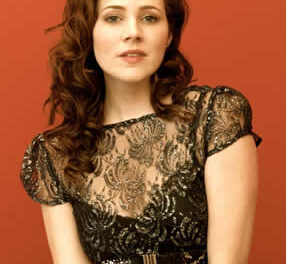While orchestral performances have sadly languished during the COVID-19 pandemic, only recently reviving in Charlotte and elsewhere in prudent baby steps, chamber music has flourished in online productions. On Memorial Day weekend, while the youth choir and orchestra remained sidelined for a second consecutive season at Spoleto Festival USA, chamber music restarted at Dock Street Theatre in Charleston, running a full slate of programming and replaying edited versions on YouTube. Not surprisingly, it has been principals of the Charlotte Symphony Orchestra, cellist Alan Black and concertmaster Calin Lupanu, who have most dramatically stepped forward to fill the void, each of them spearheading a series of chamber music concerts while the larger ensemble remained mute. More encouraging, then, for those of us who love the intimacy and verve of chamber music, is that neither of these initiatives is in retreat now that audiences are vaccinated.
Thanks to the Connor Chamber Series, Lupanu could be seen at Tate Hall on the Central Piedmont Community College campus while the Charlotte Symphony is returning to full strength, its mainstage classics series slated to launch at Knight Theater on October 15. Lupanu hosted the concert of works by Johannes Brahms and Anton Arensky, starting off with Phillip Bush at the piano playing the Brahms Scherzo movement from the F-A-E Sonata, which was originally premiered by pianist Clara Schumann and violinist Joseph Joachim, for whom the piece was written in 1853. After this lively opening, Lupanu yielded the violin part for the Arensky Piano Trio No. 1, replaced by fellow CSO musicians Monica Boboc and cellist Marlene Ballena. Lupanu returned after intermission – inserted to give Bush a rest, he jested – for the finale, the Brahms Piano Trio No. 1, written just a year after his Scherzo.
Tate Hall immediately proved hospitable to Lupanu’s violin in the Brahms Scherzo, which also drew movements by Robert Schumann and his pupil, Albert Dietrich. On the other hand, the treble breathed more freely from the Steinway than the bass end of its keyboard, perhaps because of its nearness to the upstage wall. The music, Lupanu’s placement downstage, and the excitement of playing chamber music for a live audience after 18 months of performing for mics and cameras (if at all) were all good reasons for the violinist to excel more than usual. Coming out and masking up, seeing the masked musicians onstage taking up their share of the pandemic risk and responsibility, the audience was also primed to be exceptionally receptive. Lupanu may have seen the enthusiasm in the audience’s eyes as he looked out on us, but he couldn’t help feeling the free, propulsive spirit of Bush behind him, very much inside the music, spurring him on to be better and better.
Arensky’s trio has been on my radar ever since pianist Yefim Bronfman headlined a Sony recording of the piece over 25 years ago (paired with an even more electrifying Tchaikovsky trio), so it was not surprising to see Bush assert more leadership. Yet both of the string players acquitted themselves admirably in each of the D minor trio’s four movements. A beautiful violin melody from Boboc at the top of the opening Allegro moderato was echoed in more abbreviated form by Ballena’s cello, and hearing Ballena’s cello so much more clearly in live performance reminded me of Dvorak’s chamber pieces. Boboc captured the lightness of the ensuing Scherzo, but it was Ballena who became the prime advocate when the movement slowed to its more luxuriant Meno mosso tempo.
Bush’s sound, at times downright impressionistic, was the most distinctive element in the elegiac Adagio. Yet Boboc was also disarming, playing low enough on her violin to be mistaken for a cello if you weren’t watching. Not to be outdone, Ballena played even lower when we arrived at her spot. It was in the Allegro finale that Arensky’s music finally matched the turbulence we had heard from Brahms. Bush assaulted the Steinway with a barrage of three-chord phrases while the strings stirred up the heat. Then he turned down the volume and the tempo in a poignant passage of four-note phases. Now it was the strings’ turn to dominate, Boboc and Ballena vying in eloquence as they demonstrated how lyrical and affecting those same phrases could be that Bush had played so feverishly.
Looking at the attentiveness of Bush and Ballena throughout the Brahms B Major trio, we could assume that Lupanu held the reins, yet there was admirable parity between the parts. Ballena’s cello sang out introducing the theme of the opening Allegro brio, and she had a transporting spot in the penultimate Adagio. Bush was pre-eminent in setting the tone, restless amid the shifting tempos of the opening movement, dreamy in his intro to the Adagio before the strings interceded with their sacramental harmonies, but most mischievous in the even-numbered movements. The second-movement Scherzo suddenly pivoted from a beguiling waltz tempo to a manic chromatic outburst that presaged Shostakovich, up in the treble where the Steinway fared best, and the grandeur he imparted to the Allegro con brio finale was star-spangled American. For Lupanu to dominate amid these exploits from his partners, projecting the joy of the Scherzo and the triumph of the Finale, was quite impressive.












